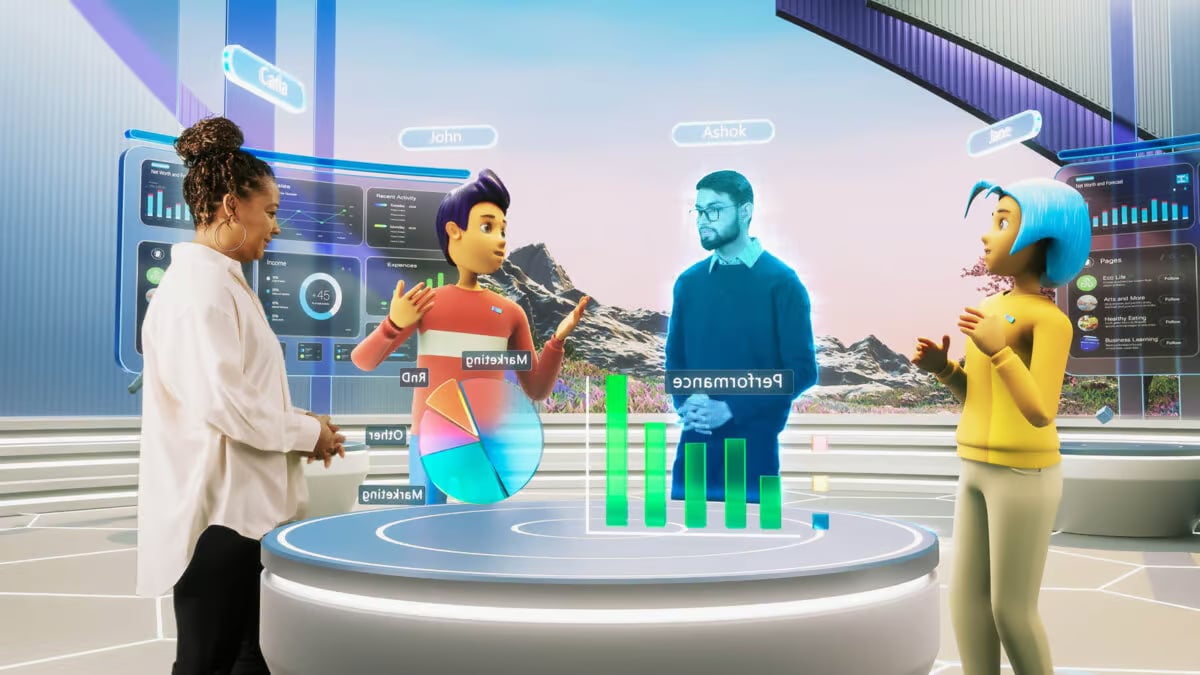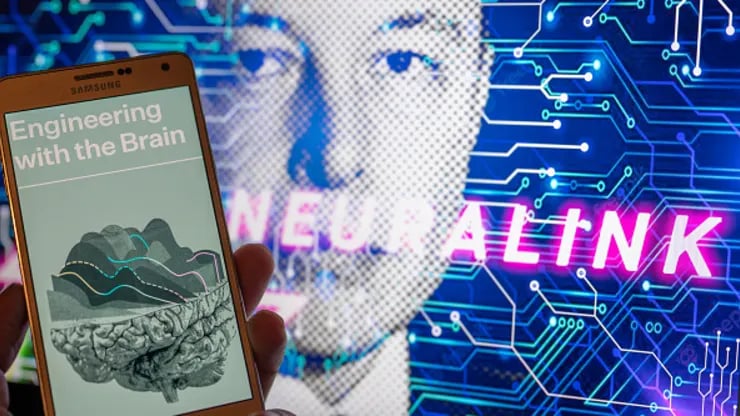Experience the virtual world – Metaverse
In the future of the internet, digital (online) activities will merge the real world with the virtual world to create immersive, real-world experiences. Brands, schools, employers, and individuals will all operate their own virtual worlds where people can gather to learn, play games, work, or socialize.
In the virtual world, users can interact with each other using digital elements, and can also create and customize virtual icons (avatars) that represent them to participate in activities such as communication, shopping, entertainment, etc.
The concept of the Metaverse has been introduced since the 1990s through pop culture and computer graphics culture, but it is only recently with the advancement of virtual reality (VR), augmented reality (AR) and powerful artificial intelligence (AI) technology that the Metaverse has begun to become a viable idea. Major technology companies such as Facebook (Meta), Google, and Nvidia have all announced plans and projects related to the Metaverse. The Metaverse is considered one of the important future trends in how people interact with each other and with the digital environment.
For example, the experience of reading a newspaper will be enhanced in the virtual reality world by the combination of technology and information content. Instead of just reading text on a flat screen, you can “interact” with the content of the report in a 3D space. This could include moving through rooms containing different articles, engaging in conversations with other readers, or even participating in virtual reality events.
Additionally, virtual reality technology can create immersive experiences that allow you to “jump” into live footage, placing yourself in the situations the article covers. This helps create a deeper understanding and a more specific feel for events and issues. You can also experience interacting with multimedia articles, including audio, animation, video , and visualizations such as 3D charts or animated graphics. This makes accessing information more fun and intuitive for readers.

Metaverse - a virtual 3D space where individuals can meet and interact online using virtual reality or augmented reality technology. Photo: Shutterstock
Breakthrough in hardware and equipment technology
To have the above experiences, hardware devices such as VR glasses are indispensable. Currently, big technology companies (Big Tech) are not only developing advanced VR glasses to meet the needs of perfect internet experiences, but they are also researching devices such as smart glasses to help people comfortably wear them while walking and interacting in the real world.
A prototype smart glasses produced by Viture look like regular sunglasses, but can display a 120-inch virtual screen in front of the wearer's eyes. When wearing these glasses, you will be able to temporarily put the real world aside to play games or watch videos, even though to outsiders you just wear normal glasses.
Future smart glasses could bring augmented reality to life by displaying digital images and information in front of our eyes. This would be one way we incorporate AR into our internet communications.
If this new wearable technology becomes popular, we may reach a point in the future where we no longer need smartphones.
“Body Enhancement” – The Prospect of Future Technology
Body augmentation is the use of technology to enhance or modify the human body. Today, humans are fully capable of making certain changes to their bodies, such as getting a cochlear implant to correct hearing or a pacemaker to control heart function.
As the internet advances in the future, humans will be able to go even further in improving their bodies. This is already being demonstrated right now. Mojo Vision is developing AR contact lenses that position micro-LED screens inside the wearer’s eyes. With the help of 5G and AR technology, the smart contact lenses can act as navigation systems with directional arrows in space. The glasses will also serve the needs of chatting, or displaying information, detailed reports related to objects around you.
Several other companies are also pushing the envelope and trying to connect our brains directly to the internet, in what they call “neuroVR.” This technology combines virtual reality with brain-computer interfaces (BCIs) to create immersive, interactive experiences that are directly connected to an individual’s nervous system.
With neural VR, users can control and interact with virtual environments and objects using their thoughts instead of traditional input devices like keyboards or controllers. Companies like Meta and Elon Musk’s Neuralink are working on BCIs that have the potential to revolutionize the way we interact with the internet in the future.

Neuralink aims to create devices that can interface directly with the human brain. Photo: Jonathan Raa
Evolving hearing and touch in virtual reality
Up to now, virtual reality seems to have only almost perfectly satisfied one sense: vision, which is also the main sense stimulated in virtual reality through displaying images and videos in a 3D environment.
To help users experience the internet on a deeper level, developers are working to develop devices and wearables that allow us to fully utilize our senses in this environment. There are already haptic suits like the Teslasuit that can provide a full-body experience that simulates realistic tactile sensations, but most VR users currently don't feel the effect.
In the future, tactile devices like gloves will become more accessible to everyday users, or lightweight tactile patches will provide the feeling of human touch over long distances. These devices will also help us interact with the objects that appear in articles in the most realistic way.
The Internet, technology and media will change very quickly in the next 20 years. Society in general and the press in particular need to prepare for that not-too-distant future.
Hoai Phuong
Source: https://www.congluan.vn/se-co-mot-the-gioi-internet-va-truyen-thong-khac-la-vao-nam-2050-post299891.html





























![[Photo] National Assembly Chairman Tran Thanh Man visits Vietnamese Heroic Mother Ta Thi Tran](https://vphoto.vietnam.vn/thumb/1200x675/vietnam/resource/IMAGE/2025/7/20/765c0bd057dd44ad83ab89fe0255b783)





































































Comment (0)